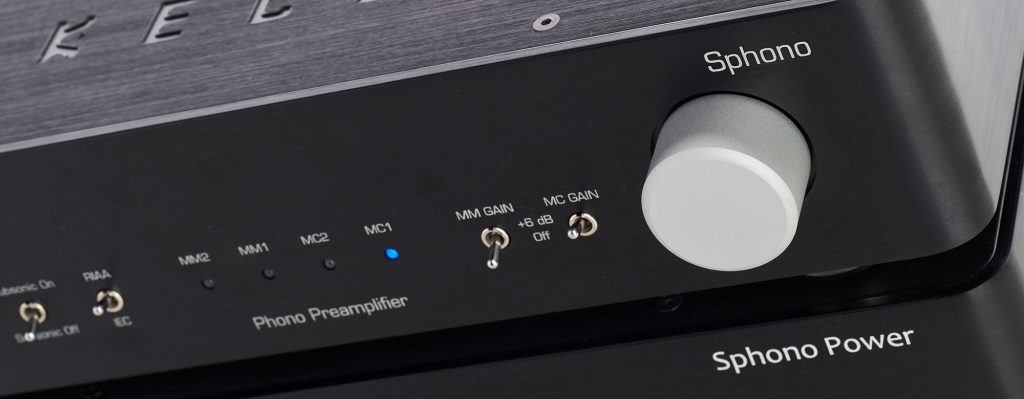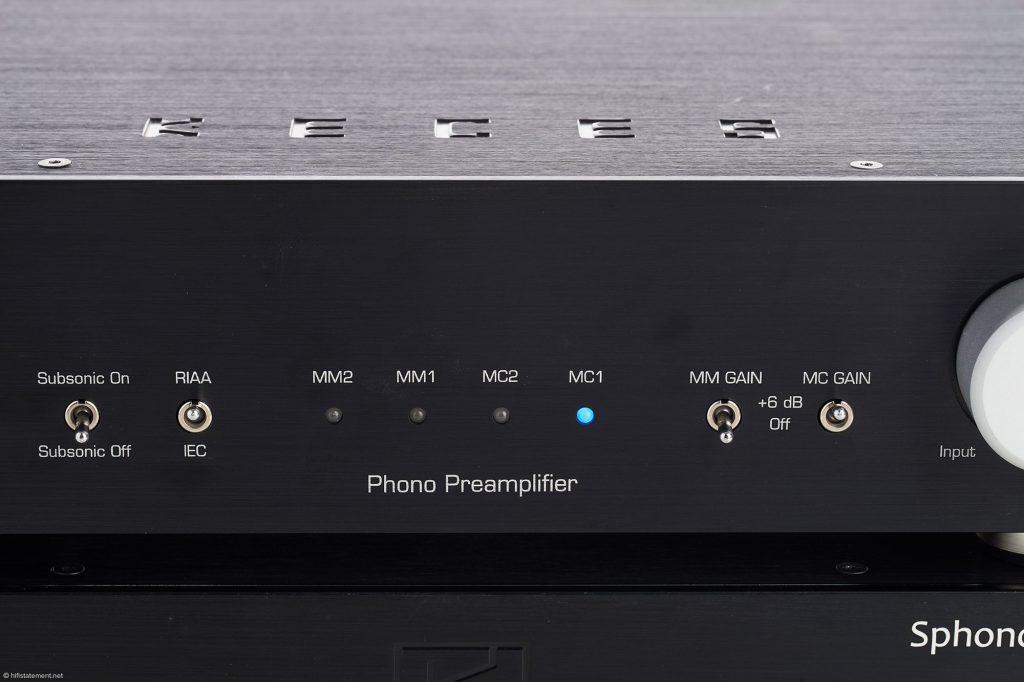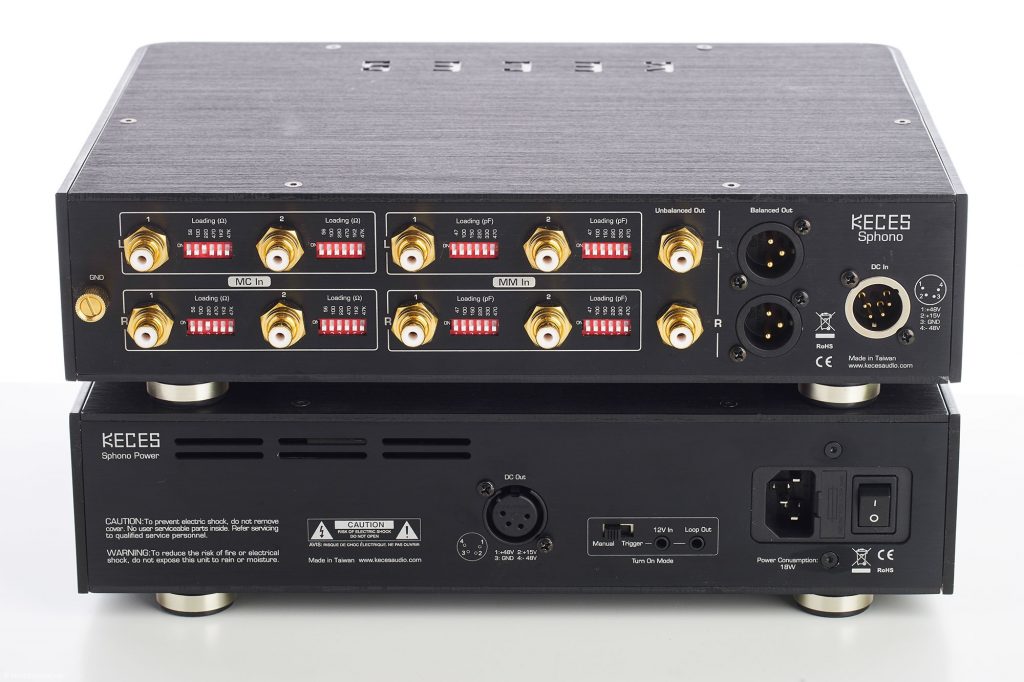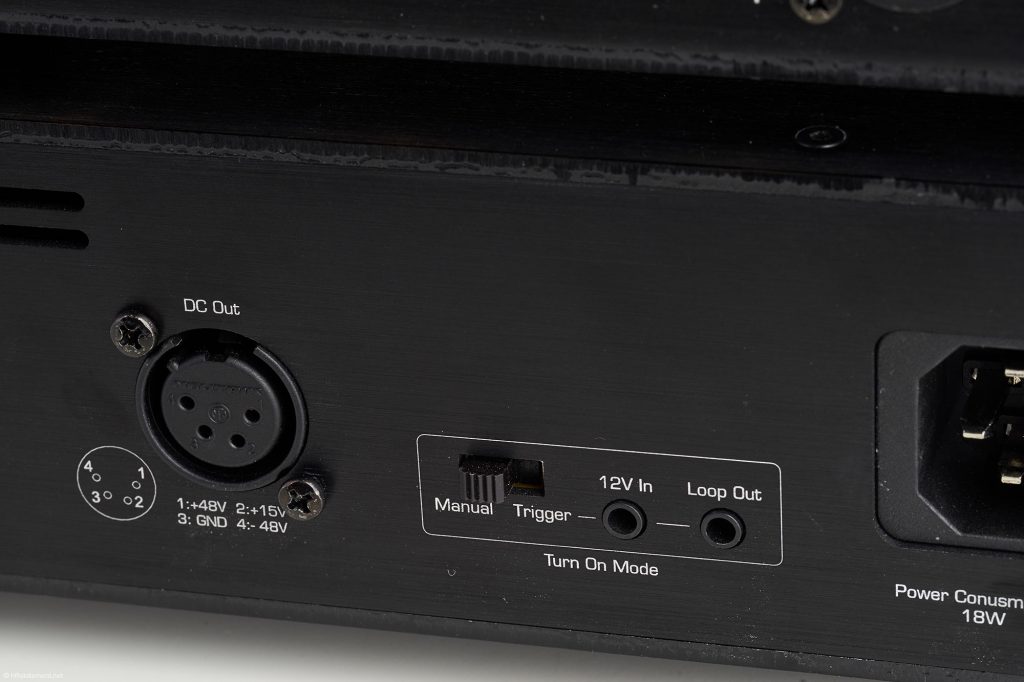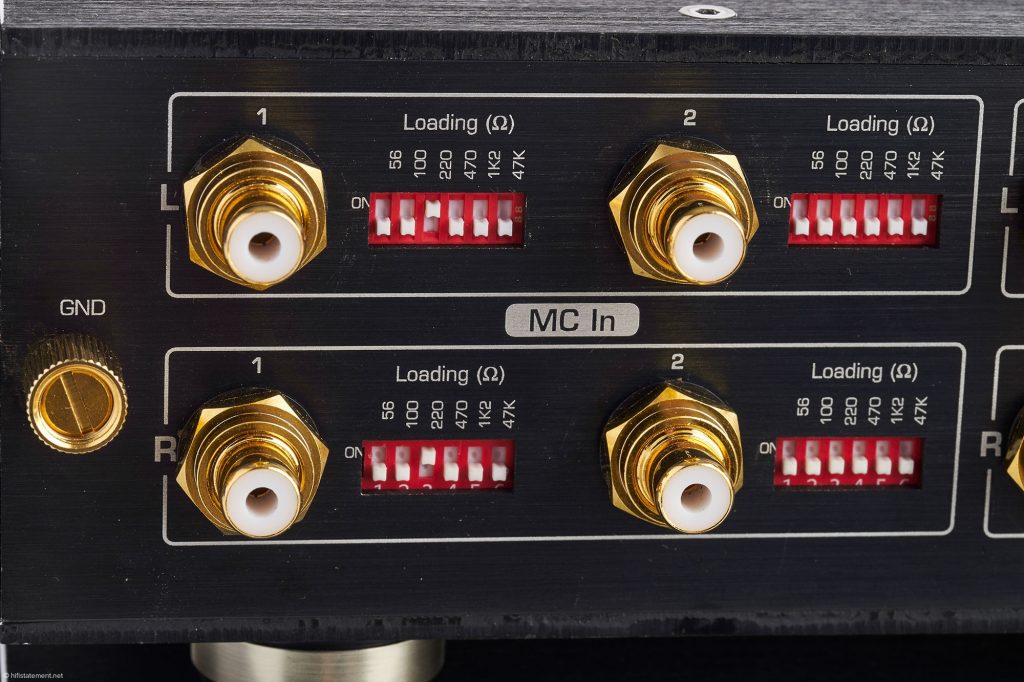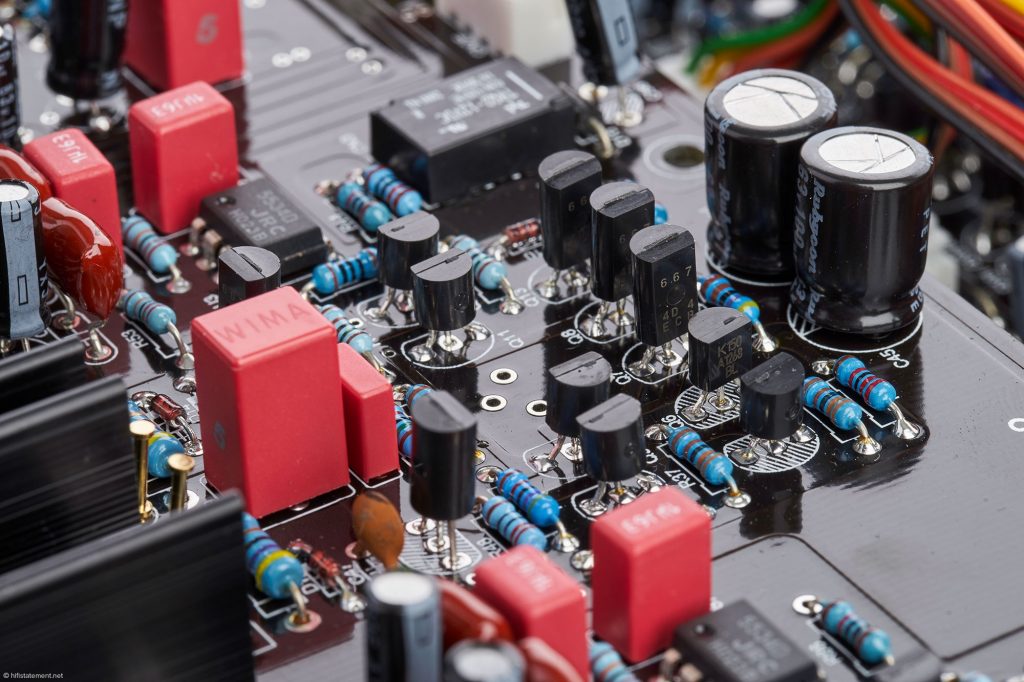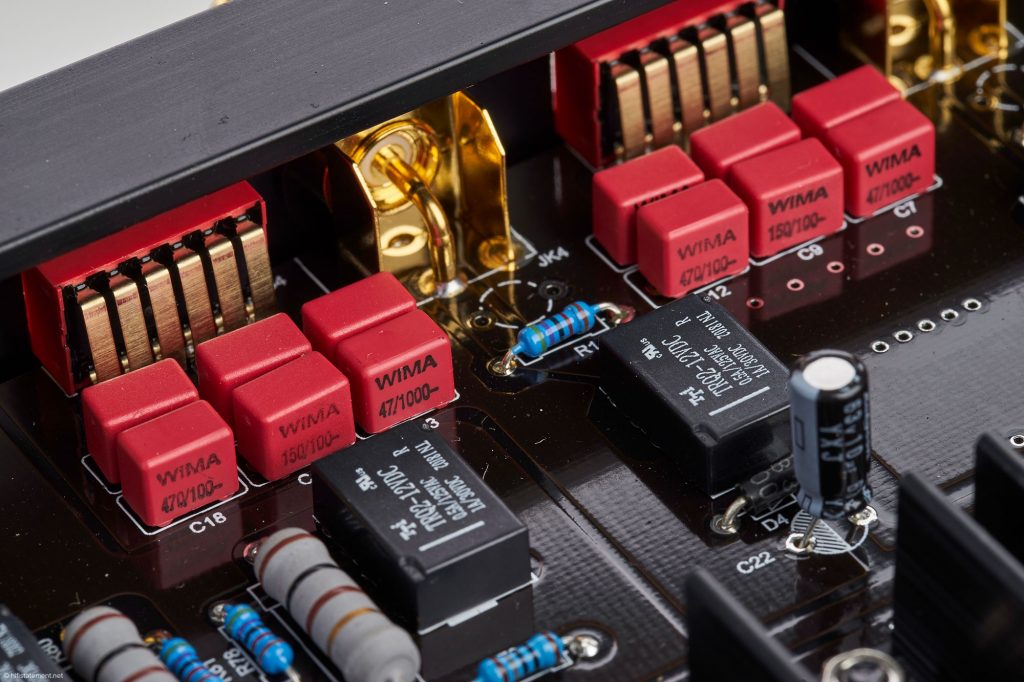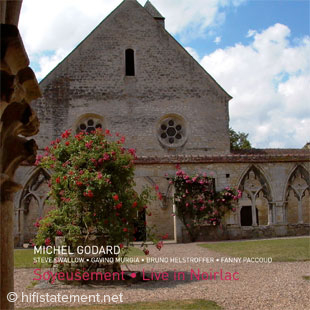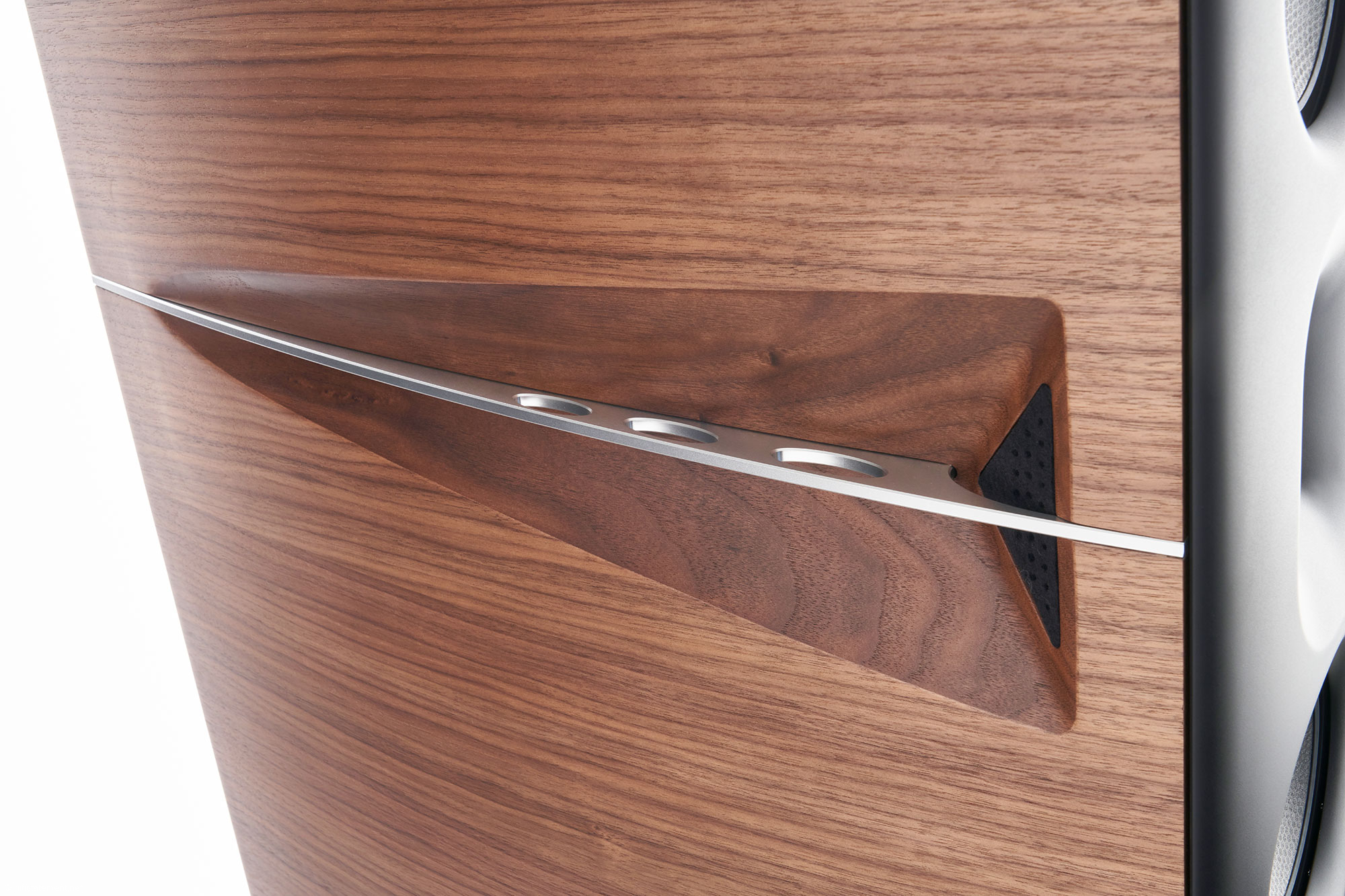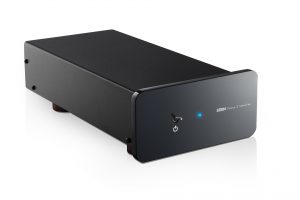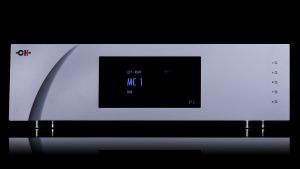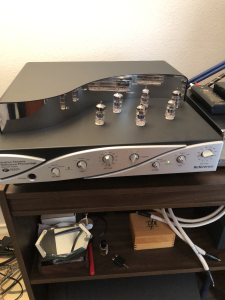With the matching cartridges, the KECES Ephono turned out to be a real bargain: So much superb sound and substantial usage of materials plus good workmanship can hardly be found elsewhere at this price. The Sphono now also offers higher load impedances and even more features. Does it also have more to offer in terms of sonic performance?
Regarding the Ephono, I had wondered where KECES did cut costs considering its highly customer friendly price, but only became aware of the fact that both manufacturer and distributor were quite stingy with information on the technology. And even if the Sphono is more than three and a half times more expensive than the Ephono, you certainly mustn't expect more facts on circuit details for the higher price. Aside from highlighting the built-in features, the product information of the company, which became known as a specialist for power supply technology, merely points out that the external mains supply, called the Spower, provides two voltages: 15 volts, as well as plus/minus 48 volts. With this unusually high voltage, reminiscent of the Voltair technology from SPL with its plus/minus 60 volts, you probably needn't to worry about headroom or overload stability any longer. Instead, one can splendidly speculate about the issue whether the Sphono works with an active, semi-active or passive RIAA de-emphasis, since any further particulars cannot be obtained.
The front panel and its controls: The rotary switch for selecting the inputs, next to it the gain switches for MM and MC cartridges, followed by the switch for selecting the type of equalization, and the subsonic filter
Let's now move on to the features: The Sphono has four unbalanced inputs, two for moving-magnet and two for moving-coil cartridges. Individual loads of 47, 100, 150, 220, 330, and 470 picofarads can be switched in parallel to each of the two MM inputs, while for the two MC inputs load impedances of 56, 100, 220, 470, 1200, and 47000 ohms are at the user's disposal. By combining the individual values, of course also intermediate values can be defined. For those who do not want to be involved in complicated calculations, we recommend the Sengspiel Audio calculator (www.sengpielaudio.com/Rechner-parawid.htm ) for the parallel connection of resistors.
The reverse sides of the Sphono and the Spower (below)
The fact that KECES now also offers the three higher values, of which I have sorely missed at least the first two with the Ephono, makes any kind of restriction in the selection of cartridges a thing of the past. According to the rule of thumb for defining the terminating impedance—internal resistance of the cartridge times ten to twenty—the Ephono had excluded almost every pickup with an impedance of more than 20 ohms. In addition, that test also showed that the more one approaches the upper factor, the more three dimensional the Ephono performs. For both the MM and the MC inputs, the gain can be increased by six decibels per toggle switch on the front panel so that a maximum of 46 and 66 decibels respectively can be adjusted. A third switch allows for activating a subsonic filter, while the fourth toggle switch offers the possibility of selecting between the RIAA and IEC equalization characteristics. The maximum deviation from the set curve indicates KECES at 0.2 decibels. The RCA jacks as well as the XLR outputs present themselves gold-plated, which one rather may expect in this price range just like "resistors and capacitors in audiophile quality," which KECES mentions in their product information.
The Spower provides an unsymmetrical voltage of 15 volts and a symmetrical voltage of plus/minus 48 volts. It can be put into operation from standby mode via the switch on the front panel or a trigger voltage of 12 volts
The good experiences gathered with the Ephono have probably made me somewhat presumptuous: I allowed the 700-euro phono stage to migrate systems from the living room to the listening room, in order to evaluate the differences between the two KECES products easier using the other, even higher resolving system. Let's then get started with the Ephono. Compared to Einstein's The Turntable's Choice—which, thanks to the fully balanced circuit design, is almost as hum-and-noise-free as a line input without an upstream phono stage. It is noticeable that the incredibly favourably priced KECES comes up with a very slight noise when the tonearm is raised—and, I must say, with the volume turned up to my preferred levels. Of course, this is completely masked by the drive noises of the stylus in the groove and is immediately forgotten when the first tones start playing: It's not about floodlighting the last centimeters of the stage or giving the instruments a little more air around them. Having the Ephone taking care of the equalization job makes listening to music a fun and sets emotions free. Of course, in an audio system where most of the power cords are more expensive than the Ephono itself, you can easily tell where the phono amp is reaching its limits. The Einstein for instance charms with more space, timbre and detail, while the "little" KECES very much focuses on the essentials: It makes any kind of music simply a pleasure—and does aurally nothing wrong. There is no frequency range over-emphasized, there is no compression effect—without having a comparison with much more expensive phono preamps, you won't miss anything.
For each of the two MC inputs, six load impedances or combinations thereof are adjustable
However, my contentment only lasts until the phono stage of KECES' Superior Series comes into play. The Sphono performs a bit even more dynamic and open, provides a little larger imaging and suggests a much wider and deeper stage. Yes, the new, "big" phono preamp is not only superior regarding the aforementioned single criteria, it just makes the music address the listener in a much more direct way. And that applies to LSC and ECM records as well as to Einstein's The Pickup in an SME V, and Transrotor's Tamino in The Tonearm respectively. The Tamino I terminate with 56 ohms, while The Pickup, for which 130 to 300 ohms are recommended, is loaded with 220 ohms. Next I try 470 and 1200 ohms in parallel, thus resulting in almost 338 ohms. In this way, The Pickup renders the first movement of the "Concierto Andaluz," a reissue of the Philips 9500 563, even more captivating: The sound stage seems a bit larger, the play of the four guitarists and the orchestra offers more rhythmic finesse, and the instrument groups are surrounded by more airiness. As with the Ephono, in case of doubt the higher terminating impedance is also the better choice for the phono amp of the S series. Good to know that the Sphono offers the freedom of choice.
The two MM inputs can be terminated with six load capacities each
Though the Ephono already featured a balanced output, it didn't prove to be any superior to the unbalanced one. In "Waterwheel" from Oregon's Out Of The Woods, reissued within the Discovery Series, I believe to have heard marginal benefits through the balanced connection—a touch more pressure in the lows and a little more airiness—but the differences are so minimal that I don't want to be tied down to one song only. In the Classic Records reissue of Shostakovich's The Age Of Gold, the track "Polka" also doesn't reveal any clear difference: With the Sphono, you needn't ogling with the purchase of other types of line cables at all. In this case the RCA cables are as good as the balanced XLR ones.
The circuit of the Sphono was built with ICs and individual transistors
After having run through all important comparison tests in the listening room, the Sphono now sets out to make his move into the living room and show how well he gets along with the Lyra Titan i. According to what I have experienced with the Ephono, I choose 220 ohms as load right from the start. Since the Titan i hasn't been used for quite a time, I get going with a "good mood" record: The Trumpet Kings Meet Joe Turner. Way back in the 70's, Pablo Records released some records with Dizzy Gilllespie, Roy Eldrige, Harry "Sweets" Edison and Clark Terry: solid, gripping blues with lots of trumpet solos, peppered with some nice Hammond sounds. Timbres, dynamics, groove and resolution leave nothing to be desired. However, the studio recording contains virtually no spatial information, though the conventional, but quite catchy, slightly fat bass lines compensate for that. So I indulge both myself and the Lyra with the other side of the record as well.
Unfortunately, it was not possible to find out which of the circuitry stages had been built up in discrete fashion
It's obvious that I have to follow up with the lack of spatial depth, preferably with an LSC recorded with only a few microphones. In keeping with the celebration of the Offenbach jubilee, I once again pull one of my first reissues off the shelf and place Gaîté Parisienne with the Boston Pops under Arthur Fiedler onto the platter of my Avance. Already the first few tones reveal that the recording of the Pablo reissue has to be blamed for the lack of three-dimensionality. The LSC lets easily forget the position of the speakers: A large and deep sound stage opens up in front of the listener. The sound fascinates with a wealth of power and colourfulness. This good I've only witnessed my records in the living room once before: That happened when testing the Aurorasound Vida— starting at a price tag of a respectable 4000 euros.
The load capacities, as well as several capacitors throughout the circuitry, originate from Wima
Keith Jarrett's "God Bless The Child" carries me away with its drive, in the opening sequence you can hear exactly the use of the dampers, while the double bass and the bass drum come with power and yet contoured, forming the ideal counterpart to snare and hi-hat, which sometimes might turn out a bit too brilliant in minimally bright sounding configurations: In this regard the Lyra and the KECES make a perfect team by simply avoiding it. Very nice. Finally, I listen to a record that seemed indispensable to me in the 80's in almost all private tests: Chuck Mangione's Children Of Sanchez. It's quite surprising how coherent and free of any gimmickry the vocals now sound through this system. The kettledrums and the brass figures haven't lost anything of their drama. The Sphono is a great way to reminisce as well: It reveals new details without even affecting the emotional impact of the composition. With KECES' S-class it's tremendous fun to be taken on the one or other nostalgic discovery trip!
Statement
Even if you don't have four tonearms operational, don't want to switch between RIAA or IEC de-emphasis characteristic , or don't need a subsonic filter, a special feature however makes the Sphono everybody's darling: the three additional, higher load resistances and the ability to assign all values in any combination thereof. Even owners of cartridges with higher internal resistance values, now loose all their arguments against the purchase of the Sphono, but win two weighty ones instead: its detailed, open sound full of enthusiasm and emotion, crowned by its still customer-friendly price-performance-ratio!
LISTENING EQUIPMENT (listening room)
- Turntable: Brinkmann LaGrange with tube power supply
- Tonearms: SME V, Einstein The Tonearm 12
- Cartridges: Transrotor Tamino, Einstein The Pickup
- Phono preamp: Einstein The Turntable‘s Choice (balanced)
- Preamp: Einstein The Preamp, Audio Exklusiv
- Power amp: Einstein The Poweramp
- Loudspeakers: Goebel Epoque Aeon Fine
- Cables: Goebel High End Lacorde Statement, Audioquest Thunder, Tornado (HC), Dragon (HC)
- Accessories: Audioquest Niagara 5000 and 1000, Clearaudio Matrix, AHP Klangmodul IV G, HMS wall sockets, Acapella Bases, Acoustic System Feet and Resonators, Artesania Audio Esoteryc, Harmonix Real Focus and Room Tuning Disks, SSC Big Magic Base, Audio Exklusiv Silentplugs
LISTENING EQUIPMENT (living room)
- Turntable: Brinkmann Avance
- Tonearm: Breuer Dynamic 8
- Cartridge: Lyra Titan i
- Phono preamp: Lukaschek PP1 and SBooster power supply, KECES Ephono
- Preamp: Brinkmann Marconi
- Power amp: Einstein The Poweramp
- Loudspeakers: Acapella Violon VI
- Cables: Swiss Cables Reference Plus, Habst Ultra III
- Accessories: Einstein The Octopus, HighEndNovum Multivocal Resonator, Harmonix Feet, Audioquest Jitterbug, Franc Audio Accessories and Acoustic System Feet, Sieveking Quantum Noise Resonator
MANUFACTURER'S SPECIFICATIONS
KECES Sphono
- Frequency response: 20Hz -20kHz
- Harmonic distortions: MM <0.002%, MC <0.009%
- Signal-to-noise ratio: MM 96dB (A-rated), MC 82dB (A-rated)
- Input impedance: MM 47kΩ, MC (variable) 56/100/220/470/1200/47000 Ω
- Input capacity: MC 100pF, MM 47/100/150/220/330/470pF
- Gain: MM 40dB/46dB, MC 60dB/66dB
- Mains supply: ±48V and +15V DC (supplied from Sphono Power)
- Enclosure: Aluminum 4mm
- Dimensions (W/D/H): 300/220/66 mm
- Weight: 3,5kg
Sphono Power
- Input voltage: 110-120V, 60Hz / 220-240V, 50 Hz (switchable)
- DC output voltage: ±48V and +15V
- Power consumption: 18 watts
- Enclosure: Aluminum 4mm
- Dimensions (W/D/H): 300/220/66 mm
- Weight: 5kg
Sphono
Price: 2,500 Euros
KECES Audio
All photographs courtesy of Dirk Sommer and HiFiStatement




